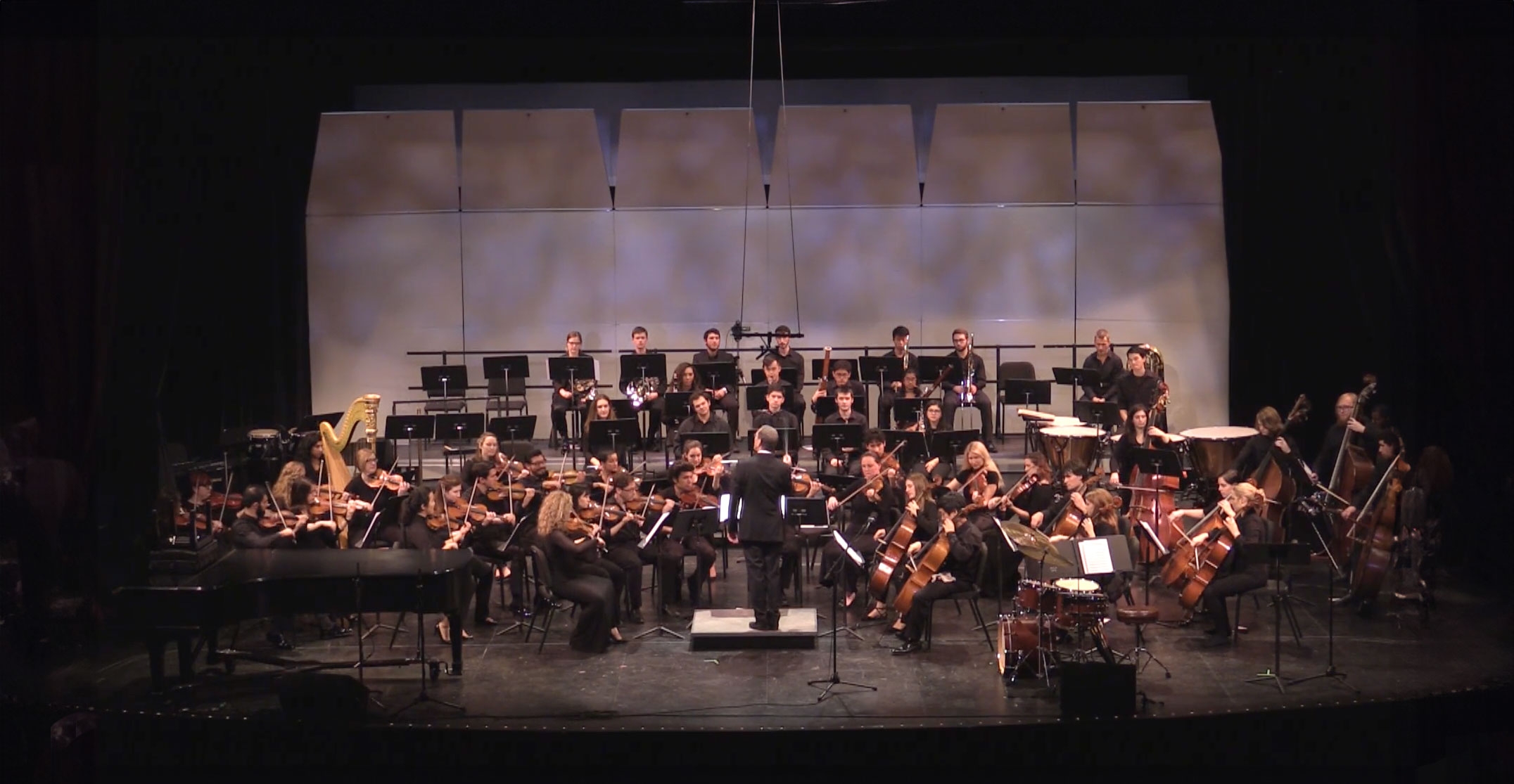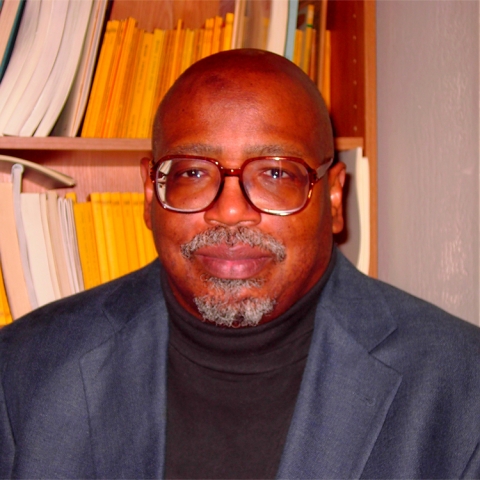
“‘Homage to Swing’ is just that, it’s a tribute to the tradition of swing,” said Professor Emeritus Earl Louis Stewart at the symphony’s premier in 2017. “It’s also an exercise in contemplative jazz. In four movements, it illustrates the marriage between contemporary contemplative jazz and traditional Western classical forms.”
Now, his “Symphony #5: Homage to Swing (Identity 158)” has been awarded a judge’s citation for Special Orchestral Accomplishment in Jazz in the category Composition – Music for Orchestra (professional division) in the 2023 American Prize Competition. In 2018, Stewart, of UC Santa Barbara’s College of Creative Studies and Black studies program, earned first place in the Global Music Awards competition.
“Symphonies, chamber works, and solo works all reflect, in a very real sense, the musical background of this composer, which is the sum of the American urban folk tradition, i.e. spirituals, blues, soul music, gospel music, jazz, and folk-based African music retentions,” Stewart wrote in the composer’s notes.
Movement I is a classic swing written in sonata allegro design and contrasted with a lively, rhythmic secondary theme, he described. Movement II is a multicultural fugue which traverses styles while maintaining a consistent beat. Opening with a non-syncopated exposition, the second movement progresses to a Bossa Nova, a ragtime, a swing, and a salsa before returning to a swing, a lively African ngoma (an African dance in an East African Mbira style) and then finally, a swing again — closing in a style reminiscent of its opening.
“Third movements of traditional classical symphonies are usually some type of dance, such as a minuet and trio, scherzo or waltz,” he wrote. In keeping with this tradition, the third movement, ‘Allegro alla Swing,’ features a jazz waltz. “However, instead of being written in song form structure, this movement is written in sonata allegro design. This secondary theme introduces the waltz, which is in sharp contrast to the opening quasi bebop theme.”
Finally, the fourth movement, “Sonata Rondo alla Swing,” demonstrates the marriage between jazz and traditional seven-part rondo designs, such as featuring the sonata rondo form and a lengthy jazz fugue which functions as a development.
After premiering “Swinging to a World of Strings” at UCLA’s Schoenberg Hall, producer Cheryl L. Keyes said she programmed the concert to “celebrate culture and to commemorate those musical bards who have left an indelible impression on how we listen, dance, and groove to music from around the globe.”
Born in Baton Rouge, Louisiana, in 1950, Stewart started playing the piano at age six and by his 12th birthday, he was playing the trumpet. As a teenager and young adult, he was playing trumpet and writing musical arrangements in pick-up bands with touring performers Percy Sledge, Sly Johnson, Garland Green and King Floyd, among others. He later studied under Walter Craig and Alvin Batiste at the Jazz Institute of Southern University, Baton Rouge, and later with ethnomusicologist Gerard Behague and composers Karl Korte, Joseph Schwantner and Kent Kennan at The University of Texas at Austin.
Stewart was greatly influenced by the Modern Jazz Quartet, which combined jazz with baroque music; and over four decades, he applied advanced counterpoint to jazz and jazz derived styles.
His online biography states that “Stewart proclaims the art of counterpoint is the combination of melodies into a higher unit, which creates the harmony. Europeans were masters of the contrapuntal technique, and it was foundational in the beginnings of their musical developments. The music was principally polyphonic; in fact, the rhythmic composites of African-derived music enjoyed throughout the world is fundamentally polyphonic. By combining rhythm and melody in certain ways in the vernacular, one finds that baroque music is compatible. Understanding this principle has resulted in Dr. Stewart’s creation of numerous jazz fugues, inventions, and other contrapuntal creations in the style of African and African-derived music.”
Across his career, his works have been performed in Louisiana, Texas, Massachusetts, New York, Alabama, North Carolina, California, Israel, England and Africa. Among his many notable accomplishments, Stewart traveled to the Republic of Ghana in West Africa as a Fulbright Scholar in 1991. There he served as conductor and composer in residence with the National Symphony Orchestra of Ghana. He also served as conductor and artistic director of the Boston Orchestra and Chorale, as guest conductor with the Scott Joplin Orchestra of Houston, and had conductorial performances with the UCSB Jazz Orchestra.
This summer, his “Juneteenth Symphony” will be premiered at the first annual Prelude to Juneteenth celebration at UCLA's Royce Hall.
After becoming paralyzed from the neurological disorder Guillian-Barre Syndrome in 2003, Stewart lost his ability to speak temporarily. During that time he said in his biography that he would hear music in his mind and repeat it constantly so as not to forget.
“The music was always there.”
Debra Herrick
Associate Editorial Director
(805) 893-2191
debraherrick@ucsb.edu




